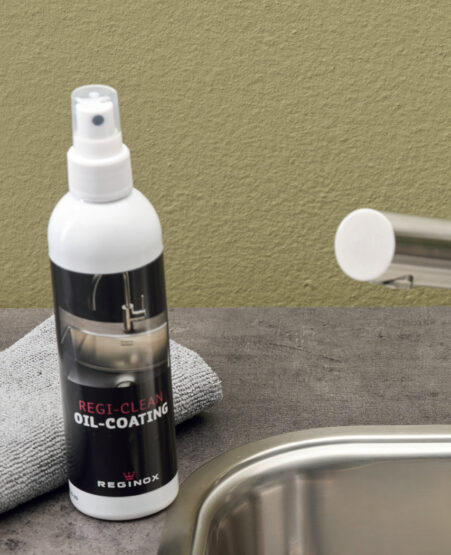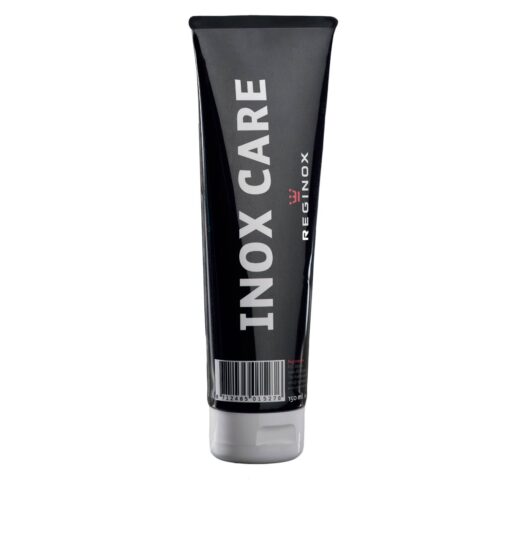Author: Ikon Marketing
Sink station in action
Posted onKeep your sink looking great
Posted on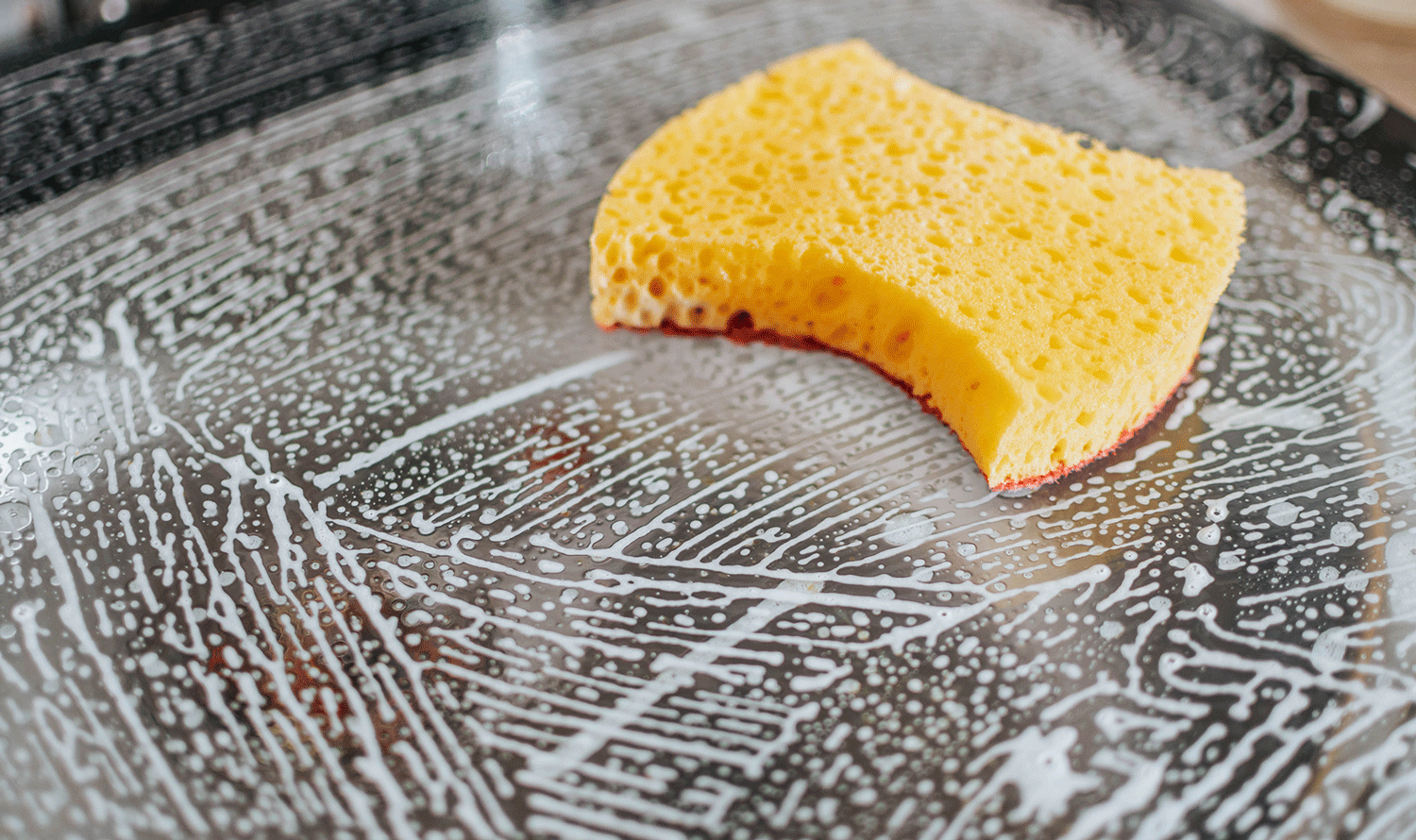
Your kitchen sink is something that is rarely thought about when you consider kitchen design, often they’re an afterthought. But they’re something that are used every day, so when you there’s a scratch, mark or stain it can drive you a little bit crazy. We’ve come up with some considerations to help you keep your sink looking like new, no matter which material it’s made out of.
MATERIAL MATTERS
Stainless Steel
There is a common misconception around stainless steels that they don’t scratch at all. The reality is that stainless steel can scratch, just like any other surface. One thing to be aware of with any brand new sink is that there is a wearing-in process. How long this takes, depends on how often and carefully they are used. This can take anywhere between one to two years. After a while all scratching and marks end up blending and buffing together so they don’t stand out like they do within the first few months.
Granite / Acrylic composite
Granite sinks are very popular for good reason, they look fantastic in your kitchen. But they’re not always the right option for everyone. While they can look amazing they also require a little more care and maintenance to keep them looking great. These sinks are very sturdy, being made up of approximately 80% quartz and 20% resin. Their shapes are formed by mixing up this solution and pouring it into a mold. This molding process is why there are some limitations to how many sizes and dimensions are available for granite sinks.
Black is our most popular colour, but you’ll need to keep in mind that if you have high calcium levels in your water supply they can be more prone to calcium rings appearing around the waste or splashing type marks up the sides of the sink.. This can combated by cleaning your sink more often, but if you’re someone that doesn’t have the time or energy to give your sink a little extra TLC, then these might not be the sinks for you. But on the other hand, if you’re more particular with your cleaning routine, then these sinks could just be your perfect match.
REMOVING SPECIFIC STAINS
Calcium build up
To combat calcium build up we highly recommend that you baste your sink, much like you’d baste cast iron cooking pans. Do this by pouring a little olive or cooking oil over the surface of your granite sink then wipe with a soft cloth. Use a paper towel to remove any excess oil once you’ve rubbed it in thoroughly. This will seal your sink and make it so you don’t have to clean it quite as often (but it’s not a magic fix). For the best results do this while the sink is new and mark free, but you can also use this method to remove calcium marks that might’ve already appeared – you may just need to do it a second time for stubborn calcium build up.
White sinks
A cleaning tip specifically for your white sinks if you do end up with coffee stains or random black scuffs, is to clean it using a solution of one part bleach to three parts water. Let this solution to sit in your sink – how long you leave it to sit depends on the stain and how long it’s been there. Don’t start by leaving it to sit overnight, instead gradually increase the time. Begin with leaving it for about 30 minutes, then reevaluate in one hour increments. It’s very important that you use this cleaning solution for white sinks only.
Limescale stains
You can remove limescale stains with our Regi-Clean Descaler. Leave the product to soak for five minutes and then remove the limescale with a soft wet sponge. Rinse with water, and dry thoroughly.
Rust in stainless steel (polished) sinks
Stainless steel cannot rust by itself. Rust formation is always caused by external influences. If you do see any ‘rust spots’, you should clean the sink with a wet cloth and treat it with Inox Care. Rinse with water, and dry thoroughly.
CHOOSE THE RIGHT CLEANING PRODUCTS
There are a lot of options and demand in the market for organic, eco cleaners. While we are all trying to do our part to be kind to mother earth, these cleaners can sometimes not actually be the best option for your kitchen appliances and surfaces. Specifically oven ceramics, granite sinks and engineered stone bench tops. The main reason why these cleaners can be so damaging is that the majority of them contain limonene. While limonene is naturally derived from citrus rind and comes from a natural source, in a concentrated form it can actually be used as paint stripper. So when choosing your cleaning products, make sure they do not contain limonene.
Reginox Inox Care
For care, protection, and maintenance of stainless-steel products, we advise you to use Inox Care as it gives the
surface a great shine and cleans/protects the surface in both the kitchen and bathroom. We also have two new products from Reginox that have been designed specifically for our range of sinks:
Regi-Clean Oil-coating: protects the sink from dirt, stains and fingerprints.
Regi-Clean Descaler: cleans hygienically and gives the surface a radiant shine. No more limescale.
Figgy & Co
Alongside the range of Reginox cleaning products mentioned above, we also highly recommended the Figgy & Co range as they are not only fantastic for the environment, but also take great care of our kitchen appliances and surfaces. Because their range of products don’t contain limonene, they are the perfect match for all Ikon products while still being derived from natural ingredients.
So there you have it, while there’s no magic fix to replace good old fashioned elbow grease and a regular cleaning routine, there are a few simple steps you can take to keep your kitchen surfaces looking like new for longer. All by just by being aware of the ingredients in the cleaning agents you choose, taking a little time to baste your granite sink and choosing the right material to suit your lifestyle.
ALSO WORTH NOTING
General
To prevent water or limescale stains, dry the sink after each use with a clean cloth (especially in the case of coloured sinks). Do not use abrasive products such as a metal scourer as this can damage the surface. Acidic products and aggressive substances can also damage the sink and may cause stains or irreversible damage to the steel. Examples of these substances are paints, chlorine, drain cleaning products, silver polish, denture cleaner, some toothpastes, S39, hydrogen peroxide and hydrochloric acid (solutions). In case an aggressive substance does drop into the sink, you should remove it immediately and rinse thoroughly with water. We recommend that you repeat this treatment several times. Cleaning the sink afterwards is often too late; by then the material is usually already damaged, which means the stains will keep coming back. Chlorine, bleach and hydrochloric acid are preferably not stored in the cabinet under the sink; the vapours can damage the material of the sink, but also the tap, boiler, etc. Especially in the case of colour coated sinks, the coloured layer can blister more easily.
Building a passive home?
Posted on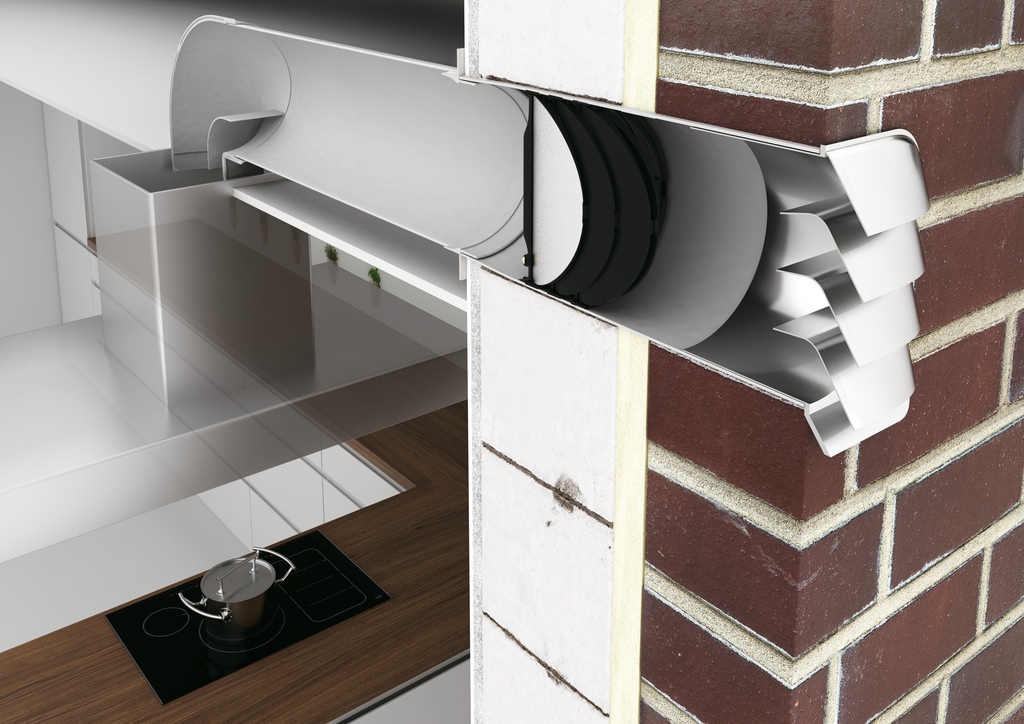
We’ve got the perfect solution for your passive home ventilation system
In recent years, the demand for passive homes has risen dramatically. We’re more aware then ever of our ecological footprint on the environment and consequently more people are looking for ways to reduce it in clever and innovative ways.
Exhaust air systems are recommended for low-energy buildings such as passive houses.
The recently released Naber THERMOBOX is a nifty little product that packs a big punch when it comes to this relatively new way of designing and building homes.
Designed to close when it’s not in use and open when air pressure builds, Thermobox has been approved for passive homes as they prevent flow and heat loss when the vents are not in use and closed. Ideal for areas that can be windy, as well as avoiding rain and preventing rodents, their insulation effect is comparable with that of double glazed windows. With their defined opening pressure of >65 Pa, they won’t vibrate or rattle with high wind loads, but they’ll also fully open even with low air flow rates. Their innovative magnetic opening and closing mechanism ensures smooth transitions.
When compared to standard backflow traps, they lose 20x less heat and this combined with their heat insulating reflective layer makes them extremely energy efficient. They fully seal when closed, which ensures that cold air from outside doesn’t come in, while at the same time preventing heat loss from the warmer inside environment your home. They are compatible with almost all ventilation appliances available on the market and offer several options for installation. The air ducts can be installed invisibly in ceilings and cabinets or as visible room elements.
This is one of those products that might be easily overlooked if you didn’t know what you were looking for. Don’t let this small, seemingly insignificant item fool you, it’s one of the keystones to having an energy efficient ventilation system.
Efficient extraction
Posted on
Get better results and reduce noise with Naber ducting
Ducting can make a significant impact to the performance of a rangehood. We all know that rangehoods are required now in any new homes, or existing homes where these are rented out. However a lot of people actually don’t realise that the ducting can make a significant contribution to the overall performance of the rangehood.

Most often people will pick a rangehood that they like the look of, has all the bells and whistles and is priced within their budget, and they think that is the end of the matter. However in the 18 years we’ve been in business, the majority of complaints we get around rangehoods is for what people believe is poor performance. However in a high percentage of these cases, it’s not actually the rangehood at fault but more the way in which it was installed or ducted.
Quite often trouble begins when a run-of-the-mill ducting kit is picked up from the local DIY store and it’s installed without any calculation to how this will affect the performance of the rangehood. Bends that are too tight, ducting too far and flimsy ducting which isn’t sealed are the main contributing factors when performance issues happen.
The traditional household only requires approx. 500 cubic m/hr of extraction. Clearly this alters based on the size of the room, airflow, what they cook and how often they cook. The design of the kitchen also affects the extraction of the rangehood efficiency.
How can I improve my extraction to get better use out of my rangehood?
There are a number of things you can do to improve your performance so that your rangehood is working as effective as it possibly can:
1. The rangehood should have a larger width of ‘vents’ compared to the size of the cooktop
2. The further away the rangehood is placed, or motor for that instance, has a substantial impact
3. The ducting and type of ducting you use can have a significant impact.
Here at Ikon we always recommend rigid ducting. This is because normal aluminium ducting creates hole-vents which allows the air to stop and get caught up in the creases of the aluminium, whereby Naber ducting is free from creases.
The biggest issue we see is bends in the ducting. When installing ducting we find to make installation easier, ducting can be bent too far. This means the air flow hits the edge of the bend and struggles its way around the corner, thereby reducing the air flow significantly. With Naber, in all bends there are internal wind bends to allow the flow of air to move quicker around the corner. The Naber ducting doesn’t pierce and is sealed within each other (male and female ends), so they clip in and air flow cannot exit the ducting.
The last consideration is when a rangehood has to work harder to extract air that’s getting blocked in the ducting, this in turn also creates more noise. So often we hear people saying ‘my rangehood is like a jet engine so we don’t use it’. A 3 speed rangehood will always be noisier than rangehoods that have more speeds, but ducting will also have a huge impact on the noise levels. It is now possible to filter rangehoods by the number of speed settings on our rangehood collection overview page. If you’re looking for some serious capacity, our IK79.6 and IK79.9 powerpacks have nine speeds!
AIRFLOW POWER
We are now seeing the kitchen industry taking particular care when planning kitchens making sure to discuss ducting with the homeowner at the design stage. Not many people know that you can achieve an extra 10-15% increase in flow and decrease in noise by using the right ducting for your rangehood.
The airflow power required normally depends on the size of kitchen and type of cooking. The correct airflow for your specific kitchen can be easily worked out.
Simply multiply the volume of the kitchen by ten and you will obtain the ideal airflow for that room.
For example, for a kitchen of 3m x 4m with a height of 2.7m: (3 x 4 x 2.7) x 10 = 324. In this case, any Ikon cooker hood with airflow equal to our superior to 324 m3/h will therefore guarantee the complete and efficient ventilation of the room. For a large family, for those who love cooking as an art, or where a group of friends are gathered together in a spacious kitchen to experiment with some exotic recipes, the hood capacity should be over 500 m3/h.
Effective capture of cooking fumes also depends on the correct use of the product, where the product is mounted, what you are cooking and how and how the rangehood is ducted.
PASSIVE HOMES

Exhaust air systems are recommended for low-energy buildings such as passive houses.
The Naber THERMOBOX is designed to keep the warmth inside when the extractor hood is not in use, while it effectively conducts the exhaust air to the outside when in operation. Naber systems are compatible with almost all cooker hoods available on the market and offer several options for installation. The air ducts can be installed invisibly in ceilings and cabinets or as visible room elements. They are energy efficient exhaust systems that have a vent that closes when not in use. They have been specifically approved for use in passive homes.
Illumination and extraction for your kitchen island with one appliance.
Posted on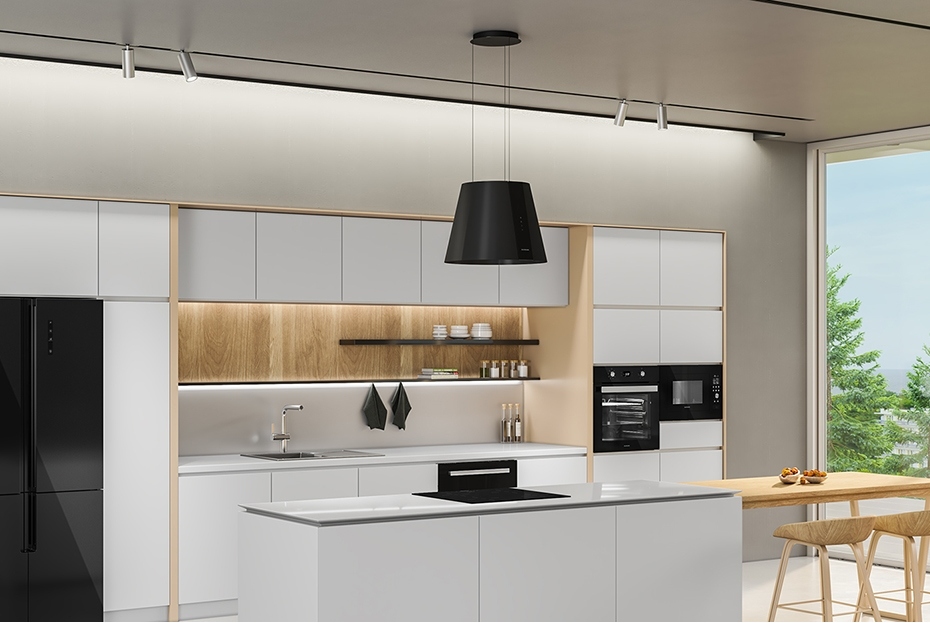
Kitchens are the heart of the home, and the kitchen island is the heart of the kitchen – a central hub where people gather to prepare food, to eat and chat. Therefore, it’s important that it is as functional and practical as it is beautiful. If you’re planning on installing a cooktop into your island benchtop we’ve a great option to keep the fumes at bay not only efficiently but also stylishly.
Illumahoods are the perfect solution for use over island benchtops as they’re easy to install – just hang, plug in and they’re ready to use. This is due to the fact that they’re recirculating, which means they don’t requiring ducting on the wall or ceiling. Unlike ducted rangehoods, which vent air to the outside, recirculating rangehoods consist of a fan with an activated charcoal filter. The fan sucks up grease particles, heat, smells, and smoke – then the filter cleans the air particles and recirculates them back into the kitchen. These activated carbon filters are also easy to clean – just regenerate them in the dishwasher on a hot wash (without detergent).
Illumahoods also feature powerful LED lighting to beautifully illuminate any kitchen. The Neat models have an 87 watt LED stripe light which filters through the tempered glass and the Pure models have two 2.5 watt LED lights. Like most other Ikon rangehoods, Illumahoods are packed with helpful features like remote control, timer function (turns off after 15 minutes) and they’ll even tell you when the filters require cleaning.
We have two models to choose from Neat (square) and Pure (round). Both models are available in either black or white and have an adjustable height ranging from 650mm to 2000mm. Neat has a squarer shape and is slightly smaller (470mm wide) than the Pure model. They also have a marginally smaller net capacity of 659m3/hour. Neat Illumahoods also feature a USB charging remote control. As well as being a little larger at 502mm, Pure has a round design and a slightly more powerful net capacity of 697m3/hour.
So really, it just comes down to which shape and colour you prefer as either model will be perfectly suitable for hanging over your kitchen island bench cooktop.
-
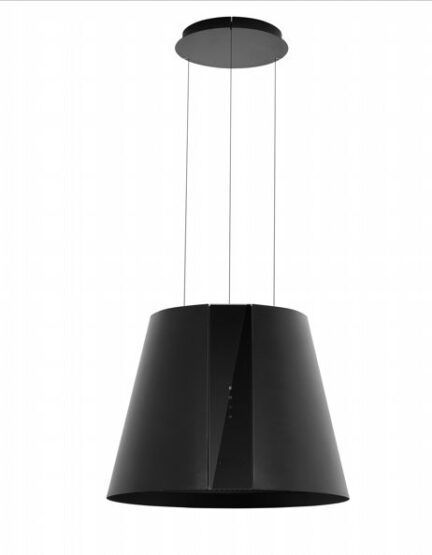 Illumahood Pure (Black)$2,159.00
Illumahood Pure (Black)$2,159.00 -
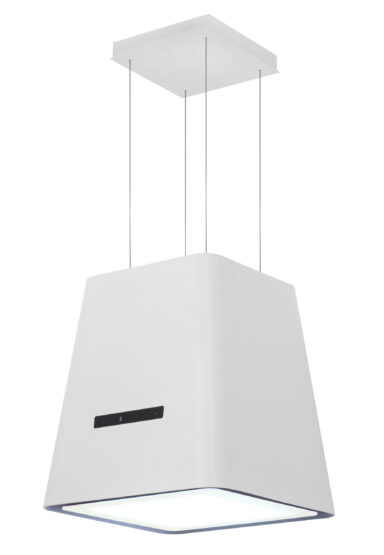 Illumahood Neat (White)$2,199.00
Illumahood Neat (White)$2,199.00 -
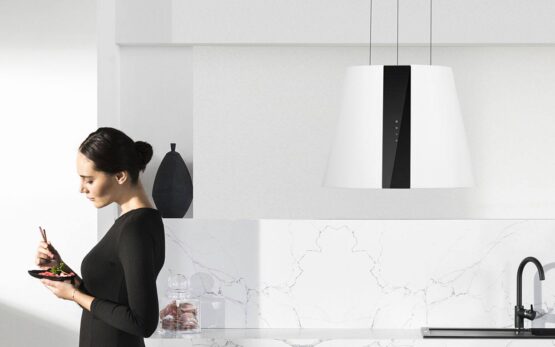 Illumahood Pure (White)$2,159.00
Illumahood Pure (White)$2,159.00 -
 Illumahood Neat (Black)$2,199.00
Illumahood Neat (Black)$2,199.00
Heavy taps with bowl & drainers
Posted on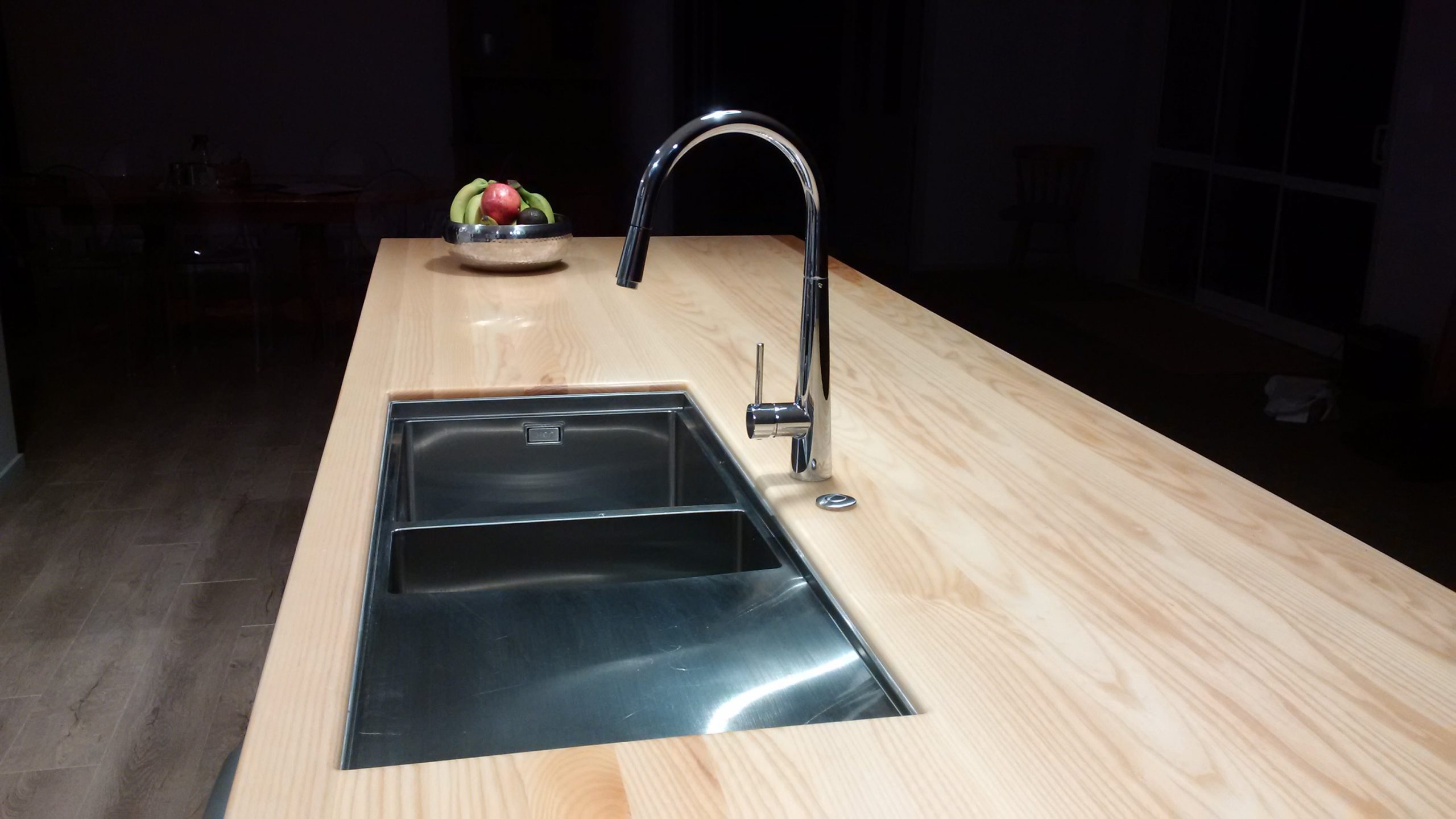
Another factor to consider

Additionally to a taps functionality (read the original article here), you’ll also need to consider the heaviness of a tap when combining with a bowl and drainer. .
This is because bowl & drainers are usually around 0.8 – 1mm thick. The reason they are made from this thinner stainless steel is that they need to be molded into shape and the thinner thickness allows for this to happen. The weight of a heavy tap can move that stainless over time through having too much pressure on it.
There is a solution – apart from mounting the tap straight into the bench top – you can purchase a triangular tap support (shown right). They can be acquired through Ikon are are designed to sit under the sink to help support the weight of the tap. Although we highly recommend choosing a lighter tap with a bowl and drainer in the first instance.
Choosing the right tapware
Posted on — 1 Comment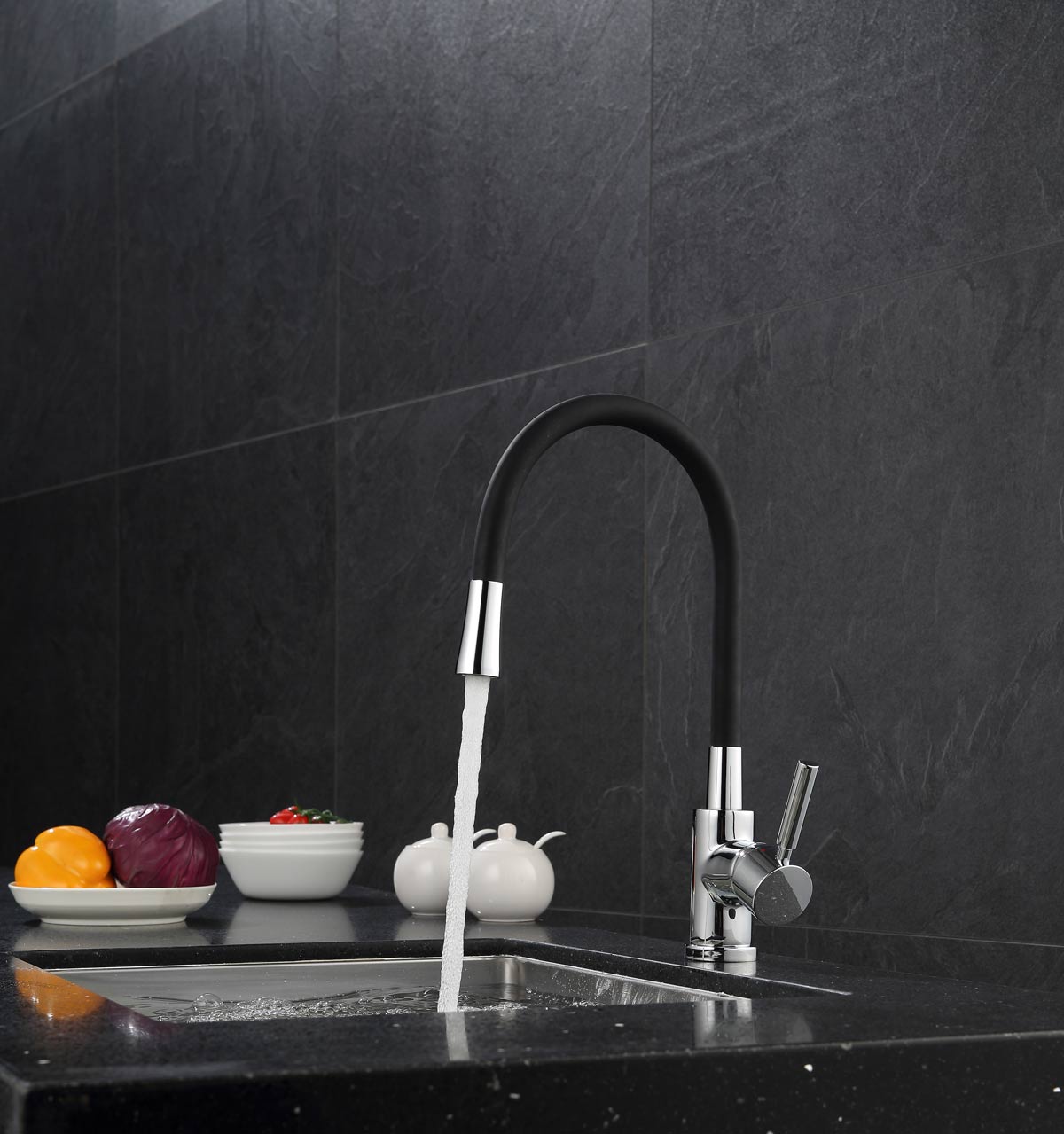
There are more options than you might think when it comes to kitchen tapware. Choosing the right tap for your sink is very important, not only for the style and look but also functionality. The wrong tap can have a big impact on the use of your sink and the kitchen overall. Latest trends show that bigger sinks are getting more popular, so therefore tapware style and functionality has had to keep up. Below are the top considerations when choosing the right tapware, especially if you have chosen a larger style sink (over 500mm wide):
Circumference of a tap
When we refer to a tap circumference, it means how far the spout comes out from the main tap body. If you have a small sink (200mm-500mm wide) the circumference of the tap is not all that important. However, if you have a large sink and a tap with a small circumference, there are going to be some issues around cleaning the sink and overall use and functionality of the sink.
Pull out options
So when we are looking at a sink with a width of more than 500mm, or perhaps even a double sink, there are some tapware options to consider. One of which are taps that pull out. These are taps that you can pull the nozzle end away from the main body or bridge. Similar to this, we also offer a range of taps that have an internal hose sitting inside the tap spout. You can pull this hose out of the spout and when you are finished the hose withdraws back inside the spout neatly. They can go up to half a metre long and use a weighted pulley system to ensure the hose always goes back when you are done. These style of taps are highly effective at getting into the corners of a large sink.
Spray function
Not just useful for large sinks, a spray function is super handy when cleaning your sink and helps to get rid of any pesky debris. These taps include a spray button, usually on the nozzle, which switches the water from a single solid stream to multiple spraying jets, much like some shower heads have multiple spray options.
We have a range of beautiful and functional tapware available for you to choose from, here are some of our favourites:
-
 Veronica IKT02$625.00
Veronica IKT02$625.00 -
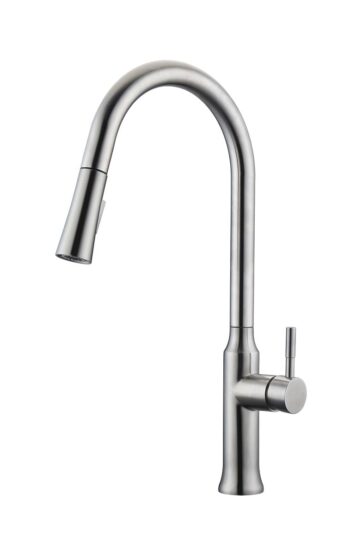 Lana IKT7001$558.00
Lana IKT7001$558.00 -
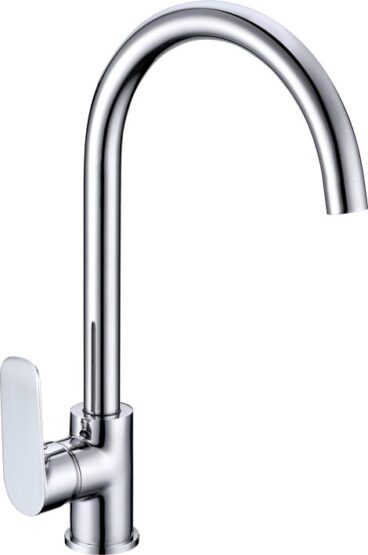 Elizabeth IKT513$540.00
Elizabeth IKT513$540.00 -
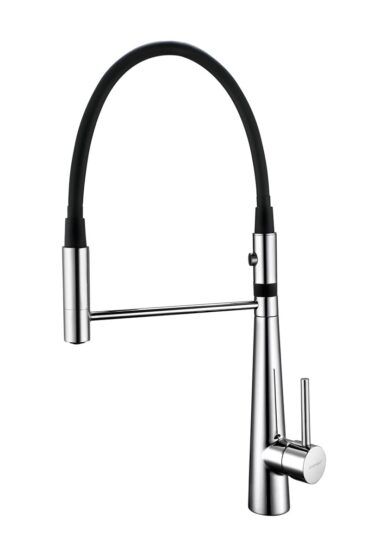 Betty IKT5598$591.00
Betty IKT5598$591.00
Of these taps, Betty & Marilyn are brand new to our range, here’s a quick preview of these taps for you to see their functionality and features.
As always, if you have any questions please don’t hesitate to get in touch with our customer care team as we are always happy to talk through your options to help you make the best decision for your kitchen.
View the original video about choosing the right tapware here:
Heavy taps with bowl & drainers

Additionally to a taps functionality, you’ll also need to consider the heaviness of a tap when combining with a bowl and drainer. .
This is because bowl & drainers are usually around 0.8 – 1mm thick. The reason they are made from this thinner stainless steel is that they need to be molded into shape and the thinner thickness allows for this to happen. The weight of a heavy tap can move that stainless over time through having too much pressure on it.
There is a solution – apart from mounting the tap straight into the benchtop – you can purchase a triangular tap support (shown right). They can be acquired through Ikon are are designed to sit under the sink to help support the weight of the tap. Although we highly recommend choosing a lighter tap with a bowl and drainer in the first instance.
Ventilation with a view
Posted on — Leave a comment
Downdrafts are ideal for those who have windows behind their cooking space allowing you to take full advantage of the view outside. An open-plan kitchen design, without an overhead rangehood, can also make it easier for guests to socialise in the kitchen and for you to interact as you cook.
Steam expands as it rises so the closer you can extract, the less amount of airflow is required. This is what makes downdrafts quieter to run, as less speeds are required. We have models that rise up out of the bench when turned on, these models feature LED lights and can be recirculated (attached motor versions). Models in this version either come with a motor attached (IK53 & IK56) or require a remote motor (IK54, IK57 & IK60) Choosing a model with a remote motor will not only free up valuable cupboard space, but they’re also quieter to run and give you more ducting options.
We also have models that do not rise out of the benchtop (IK63, for remote motor). The model with an attached motor (IK62) can also be recirculated. While these models are more cost effective and discrete, they should only be installed with induction or ceramic cooktops – their lower profile would cause too much heat reduction with gas burners. We’d recommend our models that rise up out of the benchtop in combination with gas cooktops.
If you’re looking for the next level up, Flow-In’s are the answer to a streamlined kitchen look. The induction cooktop with built-in downdraft makes clunky rangehoods a thing of the past. The hob and hood integrated in one body enables a practical installation plus easy cleaning thanks to the detachable inner body. Downdrafts are often perceived as less effective which is not the case as it depends entirely on where the downdraft is located in relation to the cooking. The most effective rangehoods on the market, in our opinion, are the ones where the downdraft is positioned in the middle of the cooking area as it has to work less to extract fumes being positioned right at the source. In comparison, a canopy rangehood or ceiling rangehood have to work a lot harder to extract steam and cooking vapours in which case most people increase speed which in return increases the noise.

Our 3416 & 3417 models may be smaller in dimension when compared to our 3413 version, but they have a larger cooking surface. Both sides of the induction cooktop can be ‘bridged’ having the entire surface cooking at once. They also have a slightly longer extractor then the 3413 model. These extractors can be manipulated to focus ventilation to one side or leave it flat if both sides are working at once.
With the versatile installation of a downdraft extraction system, you can install a cooktop almost anywhere, and allow for a truly open-plan kitchen.
A quick overview of some features & benefits of downdrafts
Overview of our Flow In’s
Our Downdrafts & Flow In range:
-
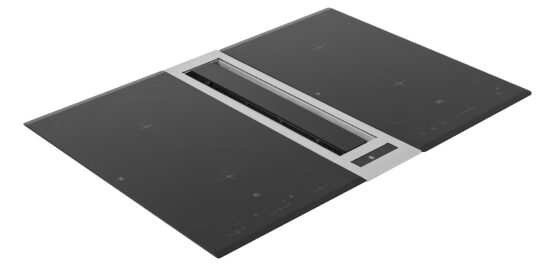 Double-Flow (3417)$4,799.00
Double-Flow (3417)$4,799.00 -
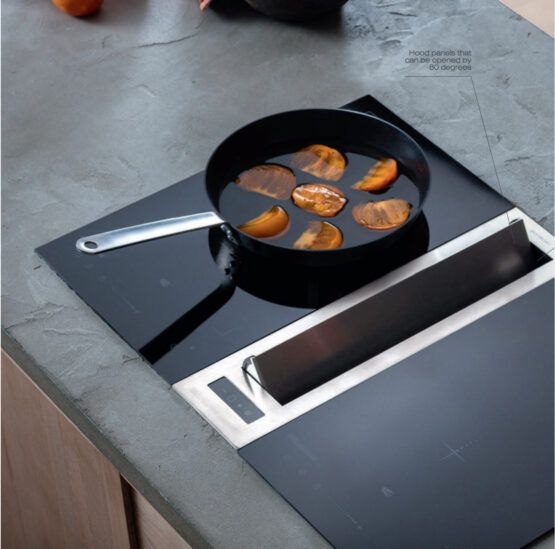 Free-Flow (3416)$4,799.00
Free-Flow (3416)$4,799.00 -
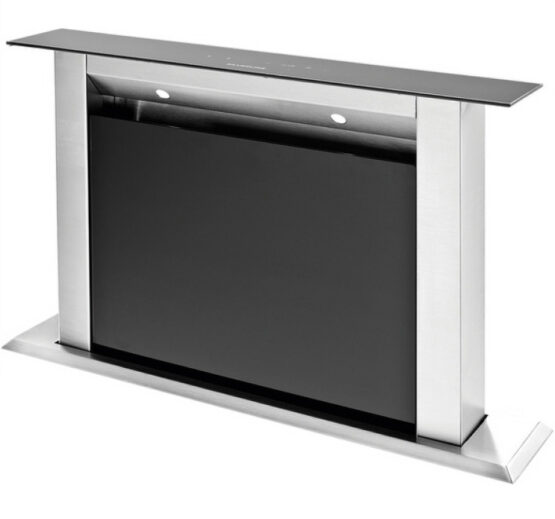 IK56 80cm Stainless & Black Glass Downdraft$3,599.00
IK56 80cm Stainless & Black Glass Downdraft$3,599.00 -
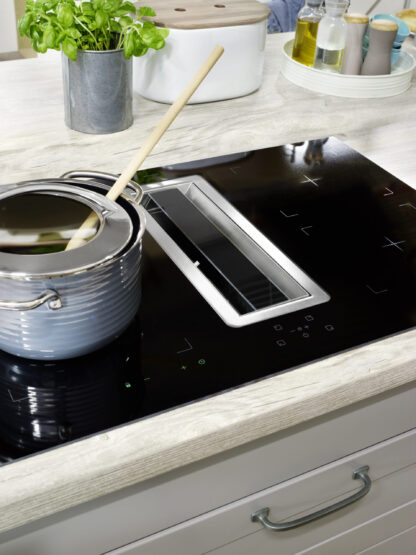 Flow-In 80cm (3413.2)$4,515.00
Flow-In 80cm (3413.2)$4,515.00
All about: Recirculating rangehoods
Posted on — Leave a comment
Whether you are remodeling your kitchen or building a new apartment, it’s highly recommended that you install a recirculating rangehood. They easy to install because they don’t requiring ducting on the wall or ceiling.
Unlike a ducted rangehood, which vents air to the outside, a recirculating rangehood consists of a fan with a charcoal filter that sucks up grease particles, heat, smells, and smoke, filters it, and then recirculates it back into the kitchen.
Here are some of the top benefits:
Environmentally friendly
Ikon’s recirculating options for rangehoods are environment-friendly due to the fact that the heated or conditioned air they filter is not released to the atmosphere.
The steam, heat, and smoke that are produced in the kitchen won’t be released outside of the kitchen. They suck up most of these particles and filter them. In essence, they’re a form of air recycling.
Affordable
Buying one won’t cut deep into your pockets. This is because you don’t have to create ducts in your kitchen or pay for any additional ducting accessories.
With advances in technology, nowadays Carbon Filters last longer and be can regenerated by placing them in the oven – in fact, most of Ikon rangehoods offer this option.
Versatile
Recirculating rangehoods are not only a sustainable option, but they are also a versatile option that is ideal for concrete ceilings and apartments. This is because ducting isn’t required and there are no holes to cut out.
Being ductless, they suit apartments when there is no external wall, so you don’t need to worry about installing it near any pipe or ducts that reach the outside.
Easy to install
Because there isn’t any ducting to install, they only require a power source. This makes recirculating rangehoods a fantastic option for remodelling projects.
Products featured in this article
-
 Illumahood Pure (Black)$2,159.00
Illumahood Pure (Black)$2,159.00 -
 Illumahood Neat (White)$2,199.00
Illumahood Neat (White)$2,199.00 -
 Illumahood Pure (White)$2,159.00
Illumahood Pure (White)$2,159.00 -
 Illumahood Neat (Black)$2,199.00
Illumahood Neat (Black)$2,199.00 -
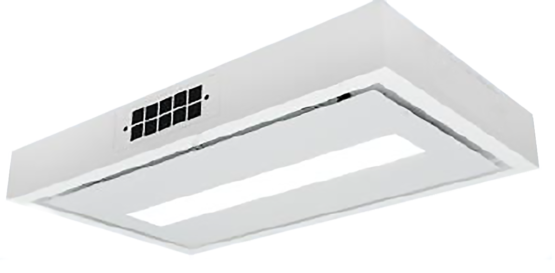 IK25W Ceiling Unit White$3,399.00
IK25W Ceiling Unit White$3,399.00 -
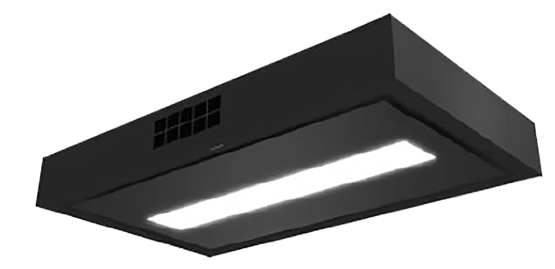 IK25B Ceiling Unit Black$3,399.00
IK25B Ceiling Unit Black$3,399.00 -
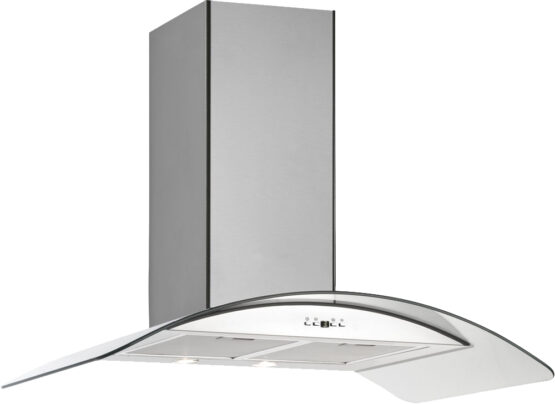 IK82 90cm Stainless Steel Wall Canopy$879.00
IK82 90cm Stainless Steel Wall Canopy$879.00 -
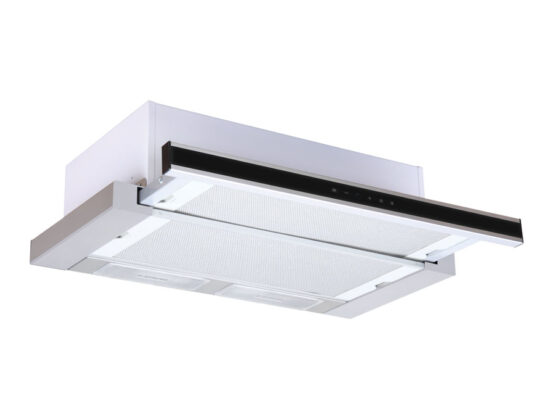 IK35 Slide out with remote control$505.00
IK35 Slide out with remote control$505.00 -
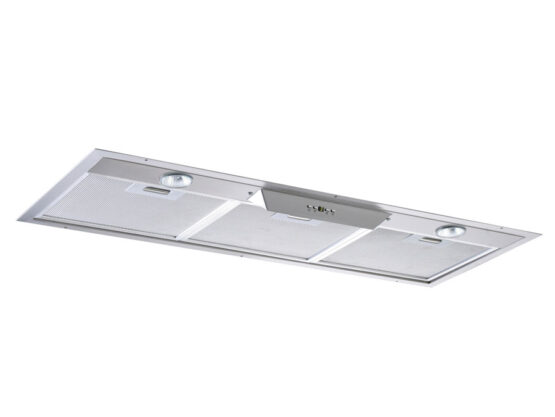 IK41 90cm Power Pack$660.00
IK41 90cm Power Pack$660.00


